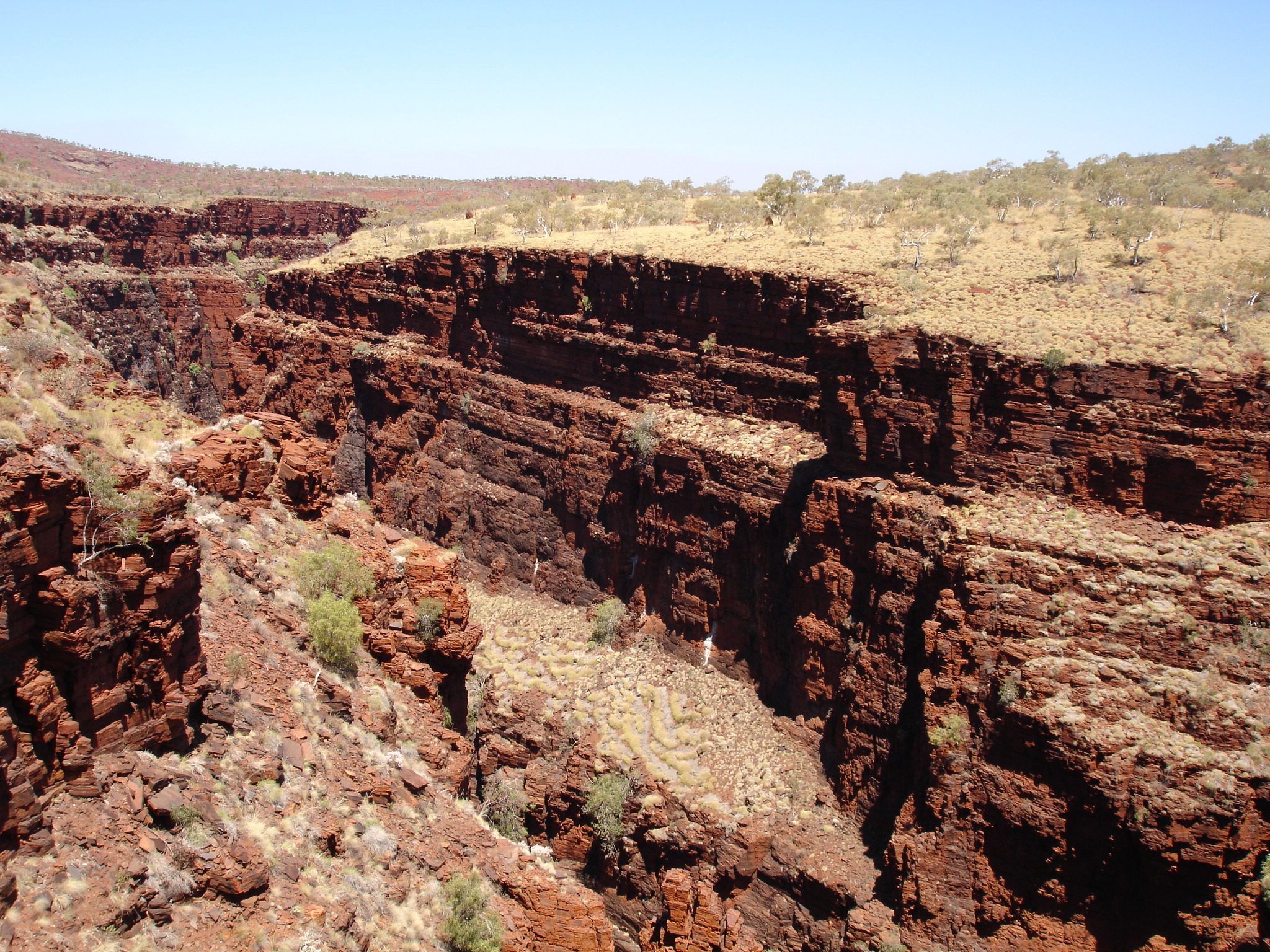A Stunning Outback Experience
Karijini National Park is an absolutely amazing part of the Western Australian wilderness and one of the most beautiful nature preserves in all of Australia
The park is located in the remote Pilbara region. If you want to see really fantastic nature and want the real Outback experience, this is the place to go. Western Australia in general has a lot to offer in that respect.
Karijini National Park is a part of the Hamersley Ranges. There are many gorges in the ranges but the most spectacular ones are found in Karijini National Park where you will find eight main gorges of up to a 100 metres (328 ft) deep cut steep-sided chasms. Some of the highlights are Danes, Weano, Hancock, Knox, Joffre and Kalamina Gorges.
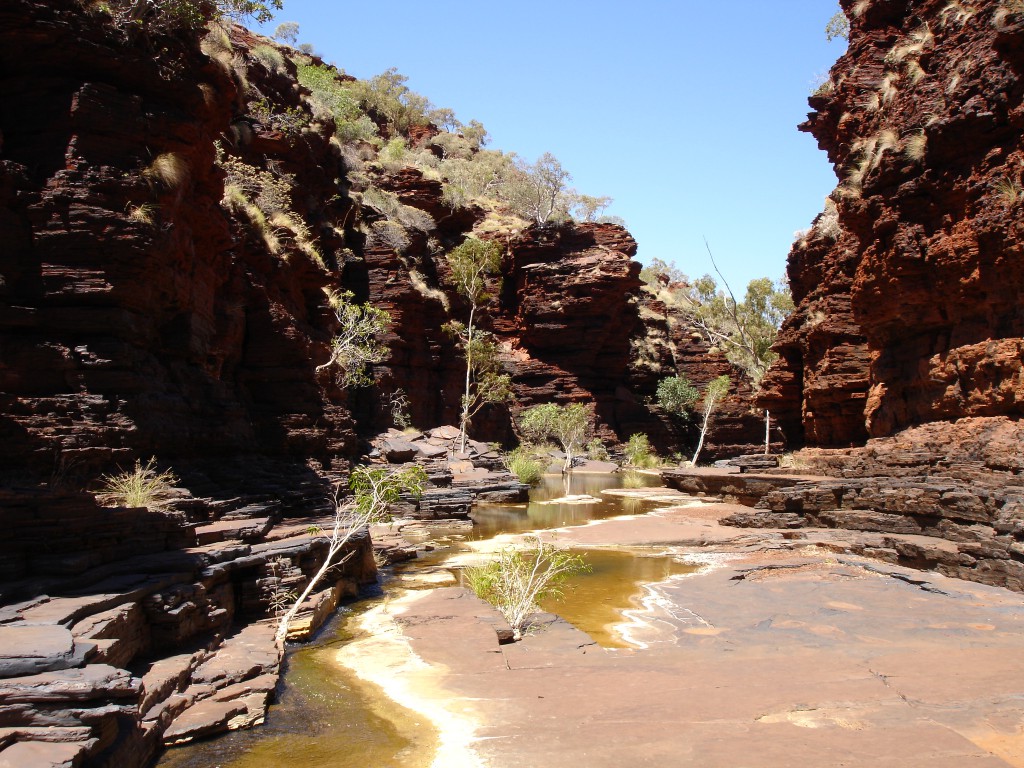
The park is categorised as a semi-desert and it can get really hot during the day, so the ideal times to visit are late autumn, winter and early spring.
There’s a great diversion of wildlife and plants in the park. You may encounter red kangaroos, rock wallabies, echidnas, goannas and great variety of birds. The wildflowers you will see depend on the season. During the cooler season you may be able to see the yellow-flowering cassias, wattles, northern bluebells and mulla-mullas.
One thing that is very noticeable all around the park are the many termite mounds. Some of them are absolutely massive. There is also a lot of spinifex which is a really spiky grass plant which dominates this kind of desert area in Australia.
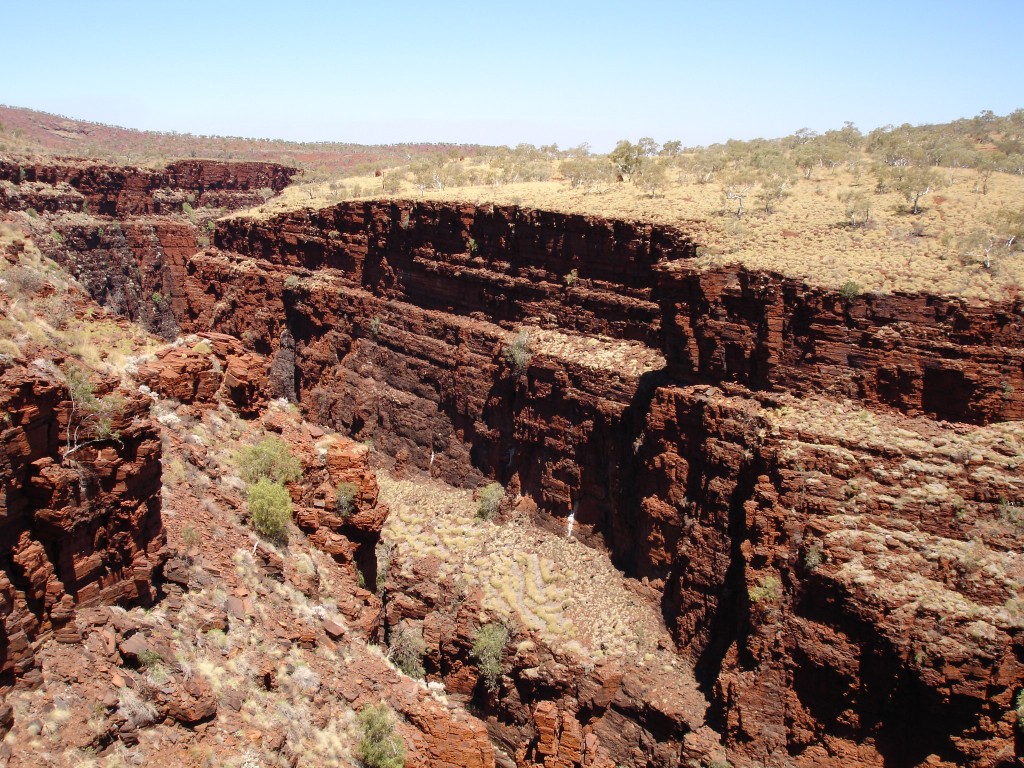
Geology: Formation of the Breathtaking Gorges
The plateau that forms the Hamersley Range has been deeply dissected to expose the vertical features of 2,500 million years old red rocks known as banded iron formation. These rocks go back to the Archaean period where very little oxygen filled the atmosphere and there were only simple lifeforms such as bacteria and algae.
The rivers that run through the gorges are tributaries of the Fortescue River which flows on the northern side of the Hamersley Range. They change from small creeks to the steep-sided chasms with a waterfall marking the dramatic transition most of the time.
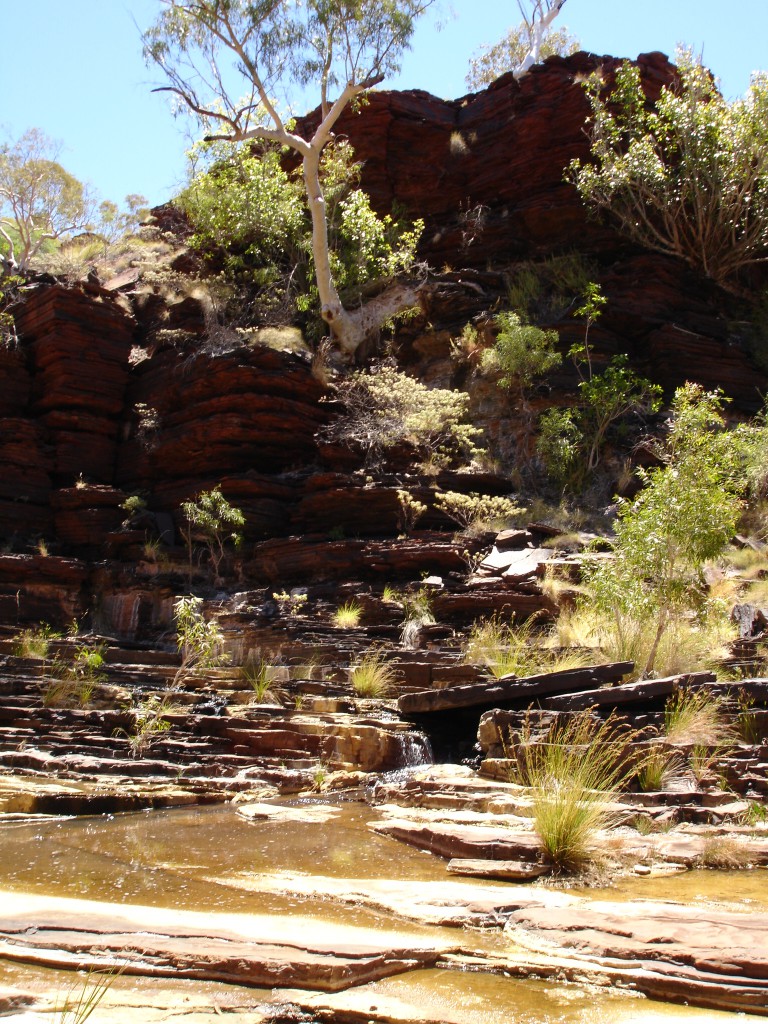
The rock visible in and around the gorges are mainly banded iron formation which are composed of alternating thin layers of fine-grained quartz, iron oxides, carbonate minerals and chert which are hard and resistant to weathering. Interestingly, the rocks are in most cases vaguely magnetic. The rocks belong to the Brockman Iron Formation which is mined elsewhere in the Pilbara region. The grey and light brown dolomite rock and purple and pink shale rock are also present.
Even though the rocks of the Hamersley Range are several hundreds of millions years old, most the present landscape was formed within the past ten million years. Geologists call it the Hamersley Surface. It is uncertain how exactly the area was formed but it is believed that erosion happened during the Late Cretaceous or Early Cainozoic periods when the Pilbara tilted to the north-west.
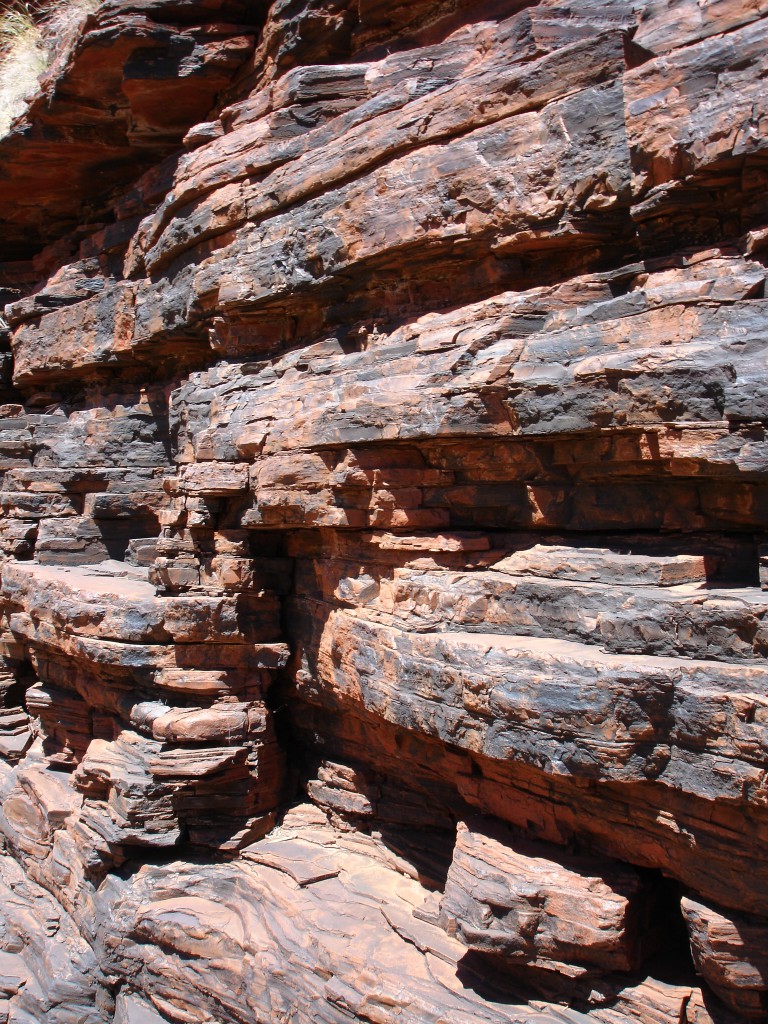
This would allow for the rivers to cut through the soft rocks of dolomite and shale beneath the banded iron and this erosion would create the stunning gorges and waterfalls. Lines of weakness such as faults and joints speeded up the process which was also supported by the dry climate and which made it difficult for vegetation to grow and protect the valley sides.
Many creeks have exploited joints or other factures cutting across the rocks. These watercourses are normally straight and in most cases have a parallel neighbouring valley such as the lower Wittenoom Gorge and Bee Gorge. If two or more directions of jointing are present, angular creek junctions have been formed like in Red, Weano, Hancock and Joffre Gorges cross each other.
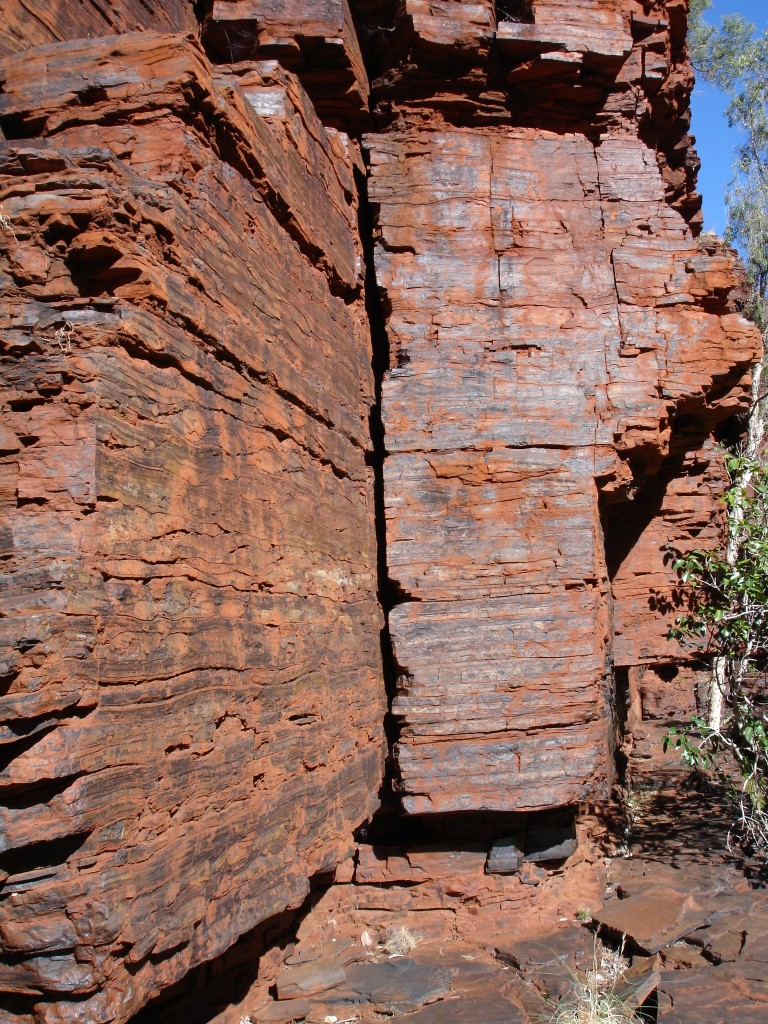
In places where the gorges are not deep chasms they have slopes and a step appearance. This is due to an alternation in weak and resistant rock types. The easily eroded soft rock such as shale and dolomite form the gentle slopes, where the more resistant rock such as the banded iron are represented by the steep cliffs.
Exploration of the Region
English born Australian explorer F.T. Gregory led a party through the area in 1861 which he named the Hamersley Range after his friend Edward Hamersley. Gregory was the first explorer of the Pilbara region. His party anchored at Karratha and spent five months exploring the area around the headwaters of Ashburton, Fortescue, DeGray and Oakover Rivers.

He would recommend Karratha as suitable for as a pastoral area on his return to the Swan River Colony, which was the British settlement based in Perth. Gregory estimated that there would be more than 12,000 square km (4,633 square miles) of land suitable for grazing. Furthermore he also draw the attention to the pearl-oyster industry.
Fun Facts
When you are in Karijini National Park you have to bear in mind that there will be no mobile phone reception and there are no street lights so at night it will be very dark and almost pitch black. A great option is to sleep outside in your sleeping bag in a swag under the stars. This is so awesome and you don’t have to worry about dangerous animals.
There are no guarantees but it is safe and note that creatures such as snakes are very shy and timid. The amount of stars you can see in the sky is amazing and it’s so beautiful it cannot be described in words. Pretty much all days and nights will have a clear sky so you will be able to see the Milky Way, shooting stars and satellites crossing the sky.
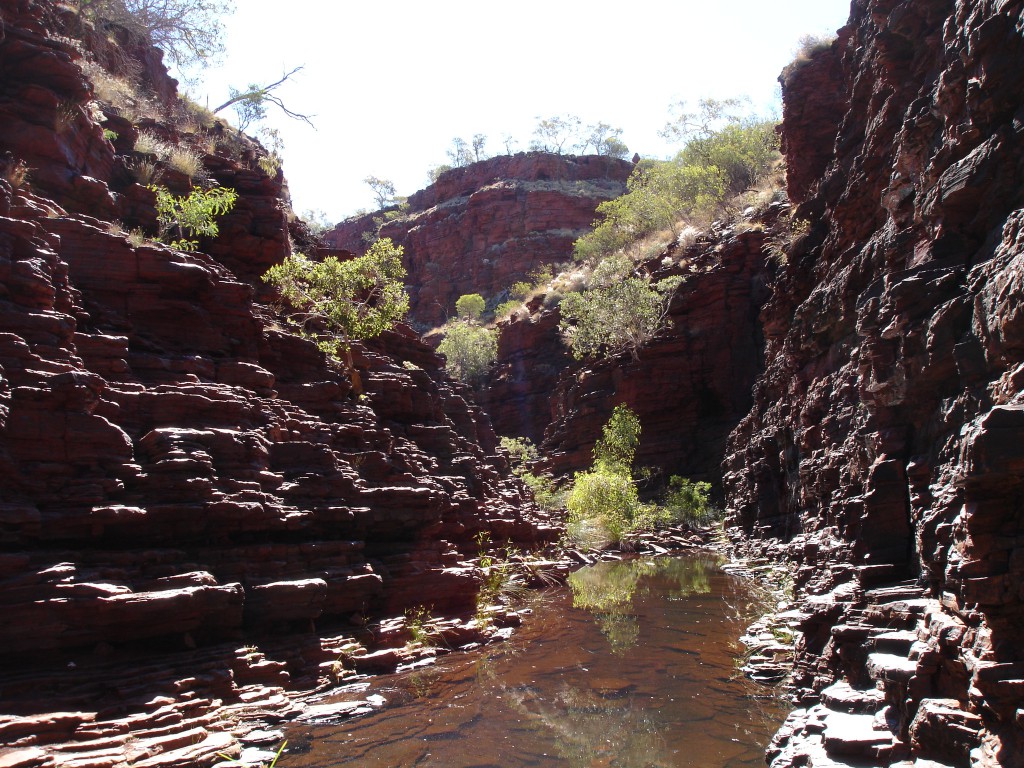
A piece of good advice. Be a bit careful with the clothes you wear. For instance don’t wear white shirts unless you want to chuck them after the trip. If you get the dirt on especially white clothes, it will be pretty much impossible to get the red colour off in the wash due to the iron content in the soil from the ground or the rocks. It will be hot, so sweat absorbing shirts are good to wear during the day and your hikes.
Another piece of advice. Remember to bring mosquito repellent as there are flies everywhere and after a while they will drive you mental. Also note the only toilet facilities found in the park are Outback dunnies (drop toilets). There is one exception which is the Karijini Visitors Centre at Banjima Drive where they have flush toilets.
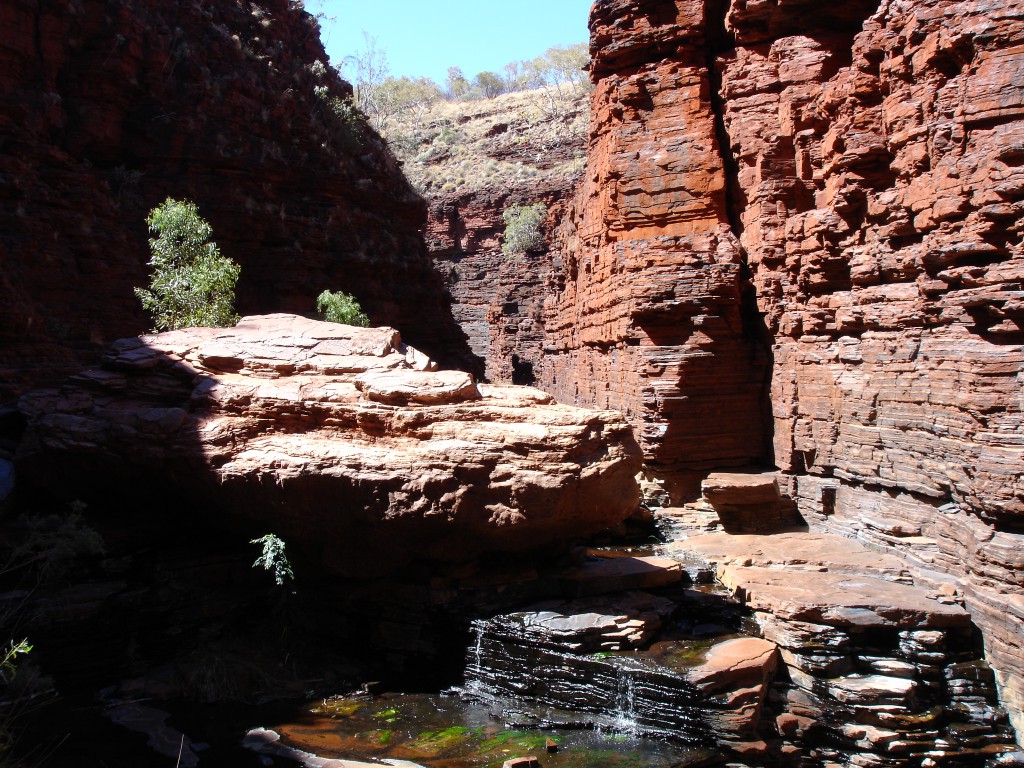
The Facinating Termites and Their Mounds
The termites and their mounds are quite fascinating. The mounds are pretty complex structures with a lot of channels and conduits which serve as ventilation systems. Actually some modern environmentally friendly “green” architecture is based on the knowledge we have from termite mounds to keep the ventilation costs down and to spare the environment from further strain. The mound is built above a subterranean nest. Some termites build open chimneys or vent-holes into the mounds as well.
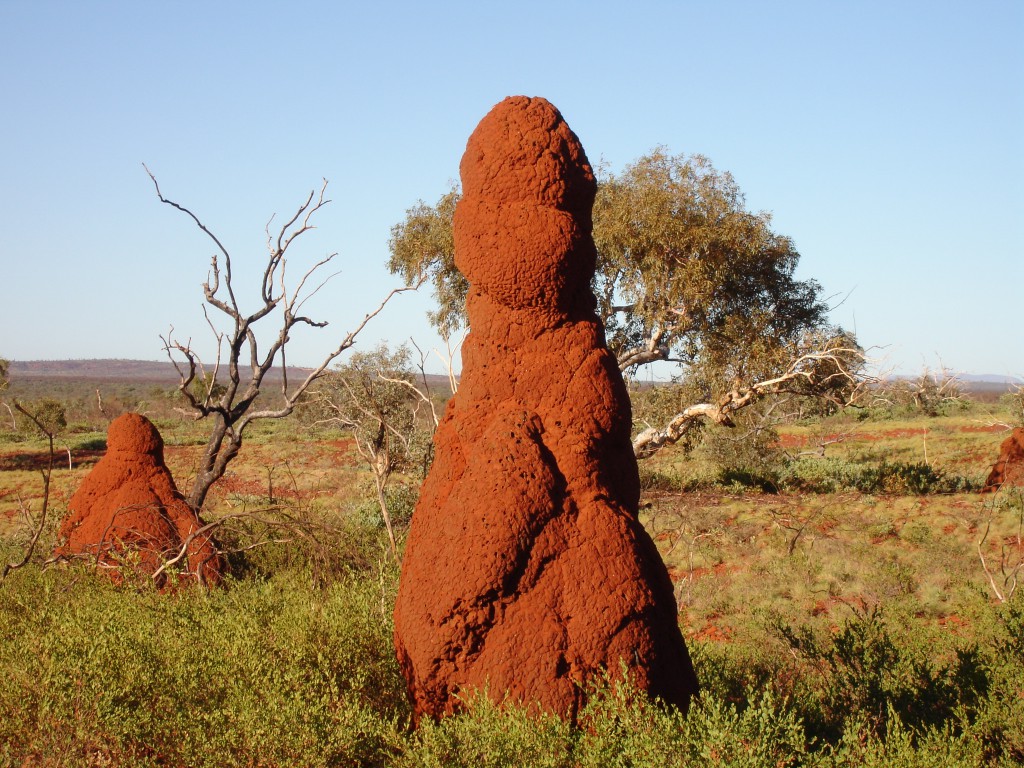
Another intriguing aspect of termites is the social hierarchy which in a way is a bit similar to the one of humans. They have “the workers” which job among other things is to create tunnels, build and repair the nest and gather food. They actually create the mound itself by dirt and their spit. “The soldiers” defend the colony from unwanted animals and lastly there are the “reproductives” which included the king and queen. Furthermore the mound is also split up between the young working termites and a different section for the retired termites.
Exploring Karijini National Park
There are several ways of getting to Karijini National Park. One option is doing the West Coast of Western Australia first, from Perth all the way up to Exmouth, which is highly recommended. Then drive from Exmouth and past Tom Price up to entrance of the park. There’s a camping site just outside Hamersley Gorge which is a nice spot.
You could camp here, have dinner and spend the night. Rise and shine early next morning, have breakfast and walk down to the gorge and have a dip. The walk is short and easy and when you get to the Hamersley Gorge you will be met some beautiful scenery. There’s a little pool which is surrounded by some pretty amazing swirls of rock knowns as banded iron formations. Really stunning. The pool is nice and calm so great for a little swim.
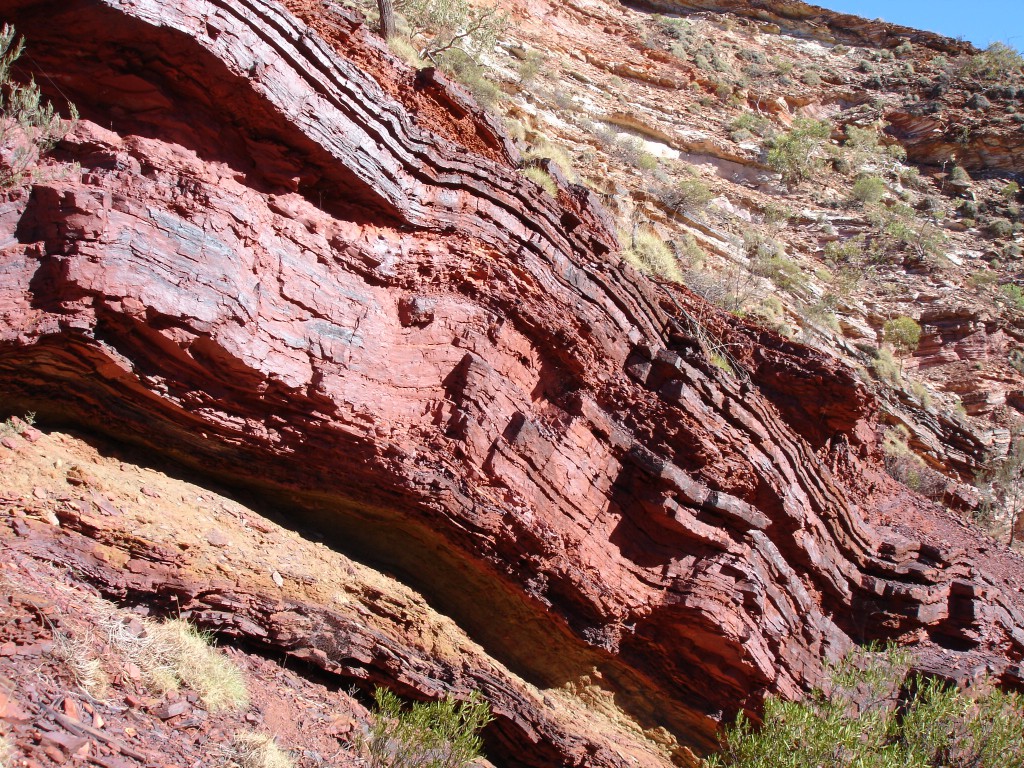
After Hamersley Gorge an option could be to pay Weano Gorge a visit. You can go via the Mt Bruce Road. Have a stop on the road to view Mt Bruce which is the second highest mountain in Western Australia peaking at 1235 metres (4052 ft) and is a part of the Hamersley Range. In the same area you can have a look at the smaller mountain called Chinaman’s Hat as well.
Then continue onwards to Weano Gorge and when you arrive have a hike into the gorge itself where you will get stunning views of the rock layers and formations. Walking through the narrow chasms is really cool and you will be surrounded by impressive steep rock walls. At the bottom you will be approached by Handrail Pool which is really nice. The walk down here can be slightly challenging. It’s a 1 km (0.6 miles) return walk which will probably take you about 1.5 hours.
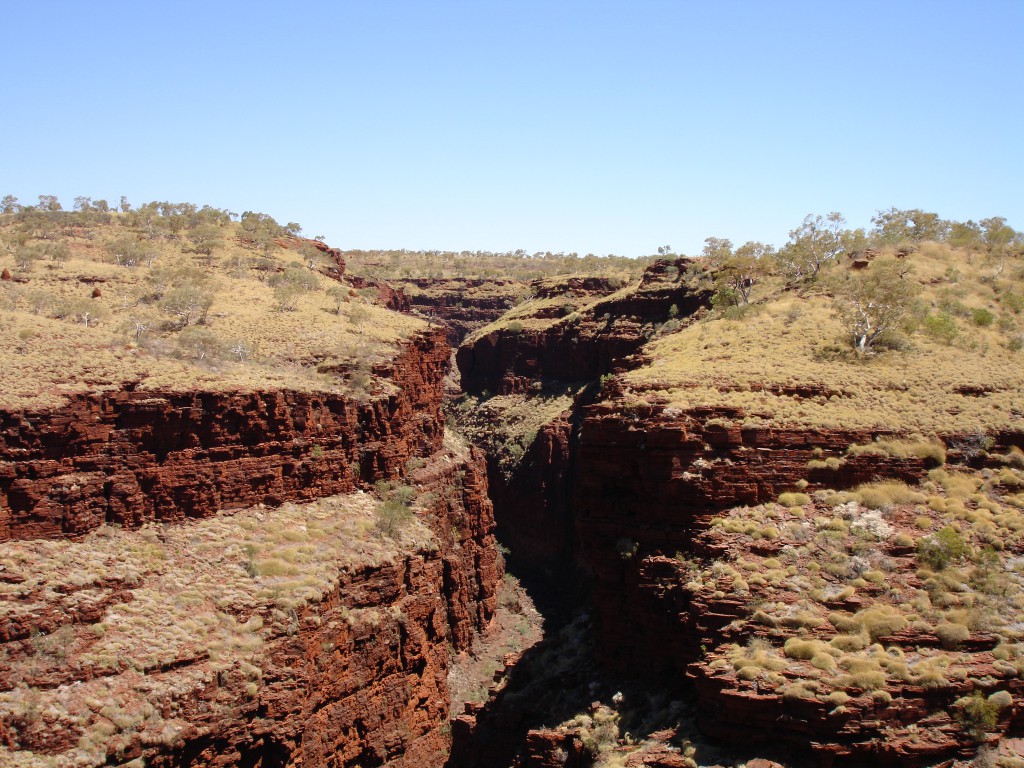
When going back up again from the gorge, not too far from the rim, an emergency phone stand is located which is quite an interesting feature. Walk along the rim and out to the lookout point where you will get spectacular views of the gorge and the steep cliffs. Take it all in as it is really amazing as this is some of the most spectacular scenery around in Australia.
Also in this area you will find gum trees. Note the black line/channel going up the tree on the picture below. It was created by termites, and you can see how they have travelled all the way the top where they have started eating the top bit of the stem. Not the huge termite mound in the background as well.

After Weano Gorge a visit to the nearby Hancock Gorge is great option. Also here you’ll also see fantastic rock formations. When you to go your hike it will be through a beautiful gorge at a creek bed with steep rock walls surrounding you. So wearing a good pair of waterproof hiking boots is a very good idea. The highlight is Kermit’s Pool which is based at the end of the trail.
To get from the gorge and closer to the pool you have to do a “spider walk” along the narrow rock walls. If you know what you are doing you will be alright, but be careful as it is a tad dangerous as there will be a deep chasm below you. The scenery is absolutely amazing here with walls of wavy multi-layered rock and the pool as the backdrop. The hike itself is not too far and is a 200 metres (0.13 miles) return walk. It will probably take you about an hour depending on how much time you intend to spend at Kermit’s Pool.
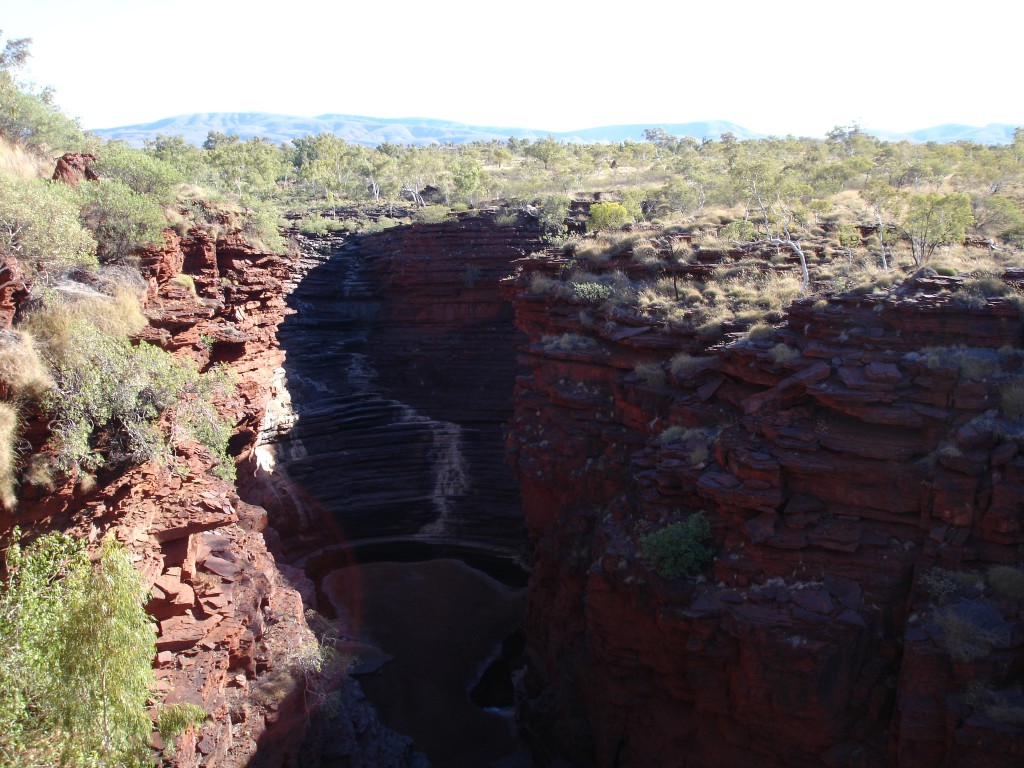
Joffre Gorge is another highlight of the park. When you go here it’s a good option to have a walk down to the lookout point and view the curved rock wall of the gorge knowns Joffre Falls which is really spectacular. Just bear in mind that during dry season it will be dried out. There is a Joffre Falls walking trail you can go on which is a 1.5 km (0.94 miles) return walk. If you walk beyond Handrail Pool you have to notify a ranger as this is a big challenge. Doing this trail you have to walk down through the pool which can be a bit chilly and through slippery rocks as well. Be careful as this can be a bit dangerous.
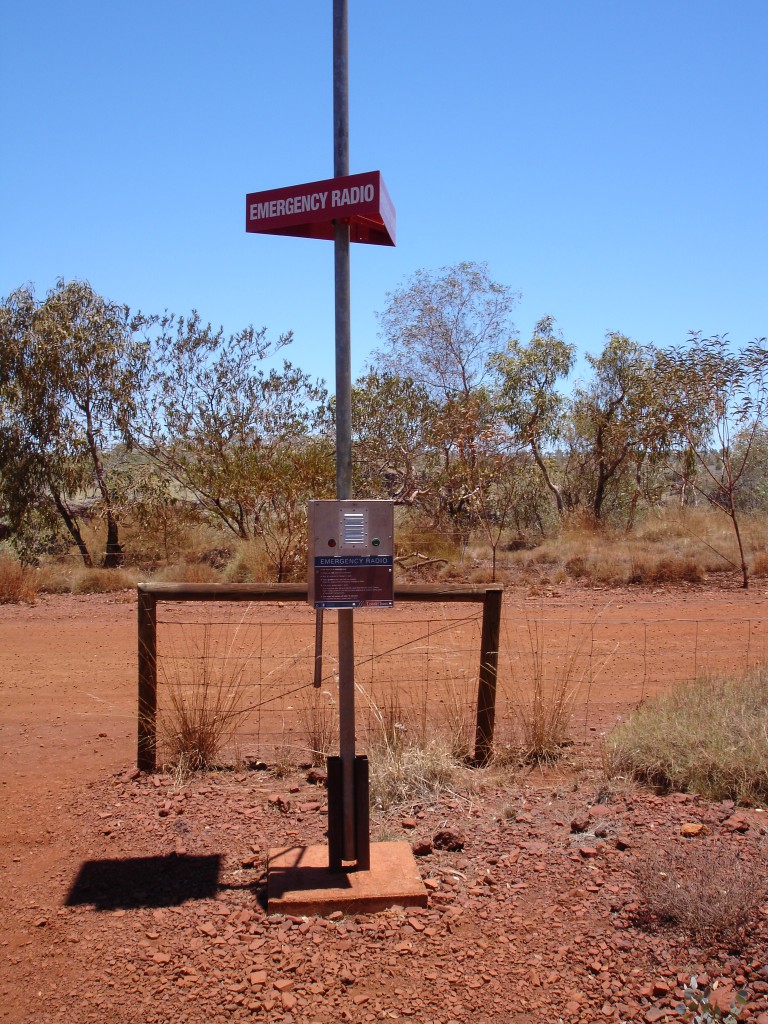
Another beautiful area not too far from Joffre Gorge is Knox Gorge. Walking along the rim you will find a very scenic steep and narrow gorge. Going to Knox Lookout is highly recommended. From here you will have a perfect vista of the gorge and you will be able to see the intersection with Wittnoom Gorge as well. It is recommended going early in the morning as the sunlight will enhance the view.
Hiking into Knox Gorge is a bit challenging and can be a little strenuous. You have to climb down among loose rock, so you have to be a bit careful, but there is a trail so you should be alright. When you get down to the gorge you will also find a lot of multi-layered rock and some incredible steep and straight rock walls which are quite a fascinating view. Also here you will be able to see some very narrow chasms and you can climb a bit up on the walls and your mates and fellow travellers can take some great photos of you.
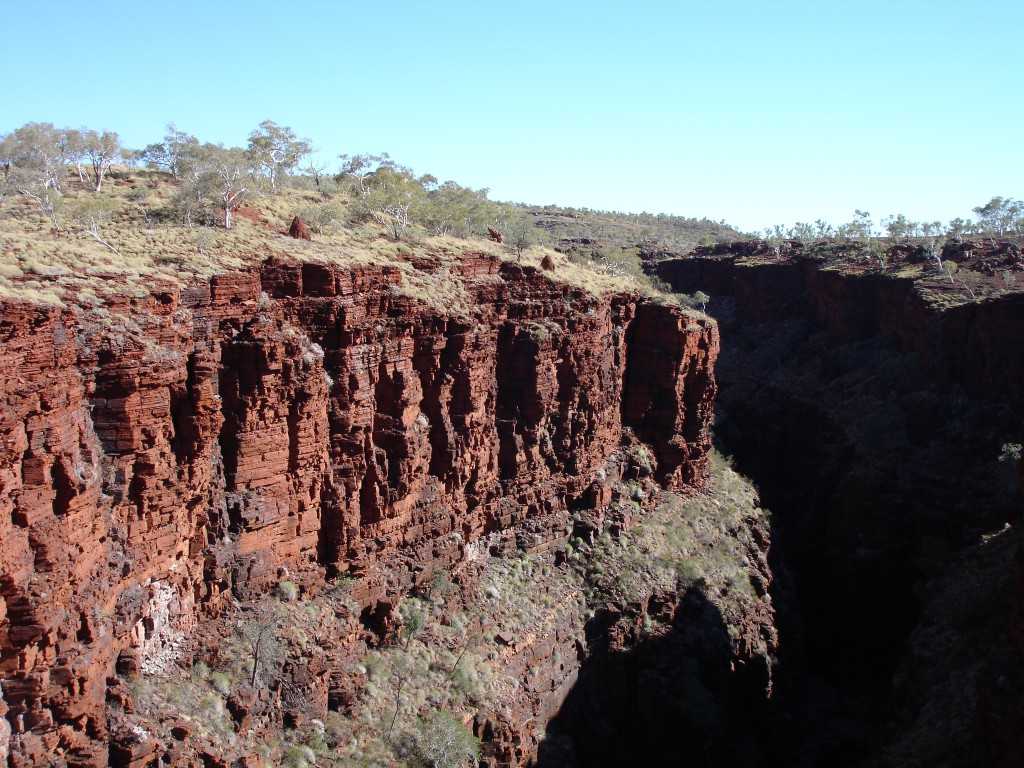
A bit further to the east, Kalamina Gorge is located. This area is less of a challenge hiking-wise but it is probably the most beautiful of all the gorges. It is not as deep and narrow as some of the other gorges in the park but such a nice area for a walk among rock pools and the trail ends at Rock Arch Pool. Note the bird at the edge of the rock on the picture. Here you can have a chill on the rock, have a snack and check out the breathtaking scenery. Amazing.
Also here you will be walking along a creek bed so waterproof boots are recommended. You can also go for a dip in one of the pools which is a cool option, especially as break from all the hiking during a hot day. Going down here and back is 3 km (1.8 miles) return walk and depending on how much time you allow yourself at the pools it will probably take you about 3 hours.
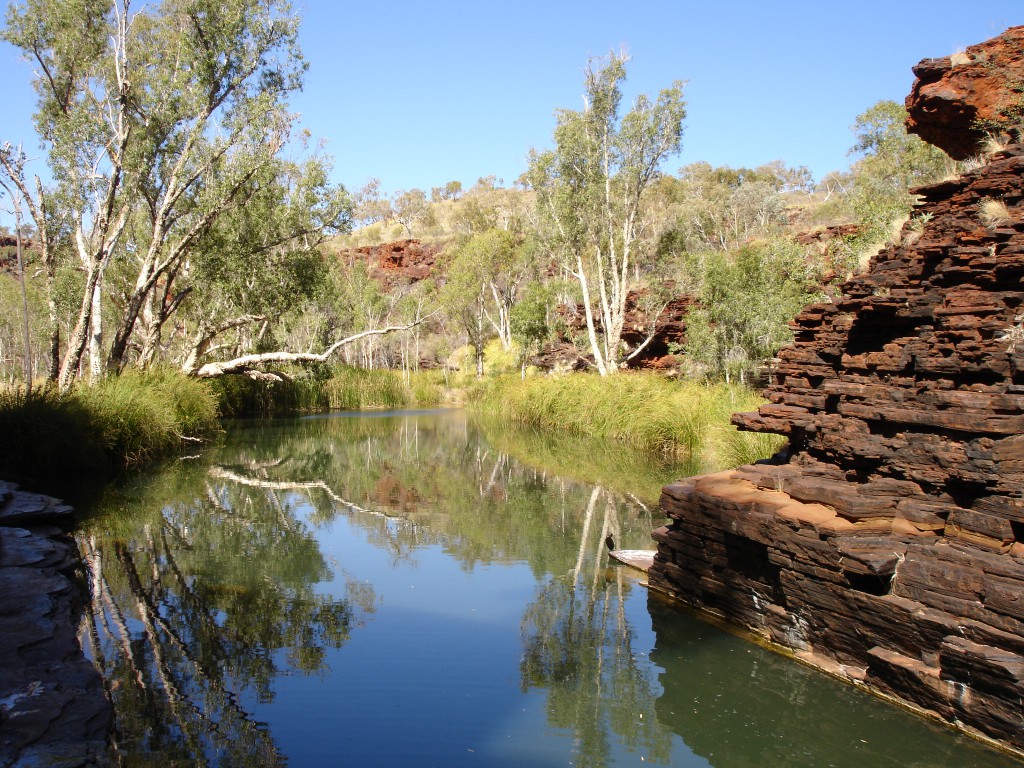
Hidden Gem: Aboriginal Rock Art
When leaving Karijini National Park a good place to set camp outside the park is at Wanna Munna which is a little hidden gem. Mind you, it is not allowed to have campfires within Karijini National Park but if you set camp outside the park it is possible. After a good days hike and activities it is nice to set up a campfire.
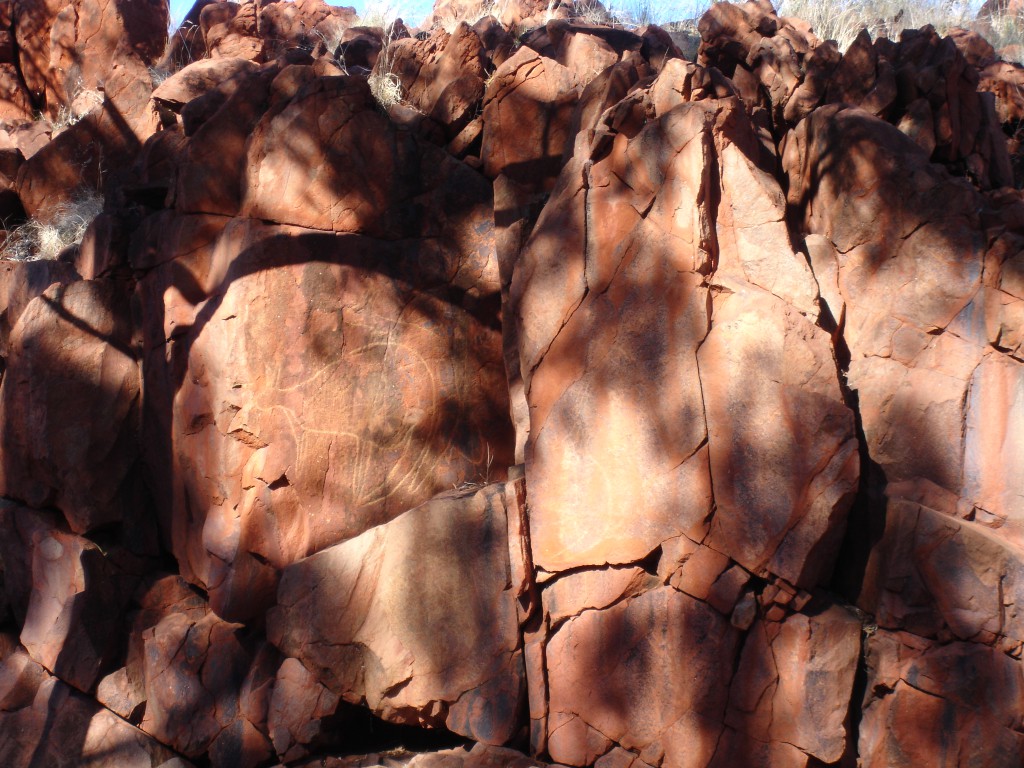
At Wanna Munna you can find some Aboriginal art that not many people know about as it is not sign posted. The artwork is located at a small gorge on the upper reaches of the Weeli Wolli Creek. This is also a nice little area where you can have a little stroll around.
After Karijini going to Newman is highly recommended to have a look at Mount Whaleback Mine, Newman itself and the visitor centre where huge mining trucks are on display.
